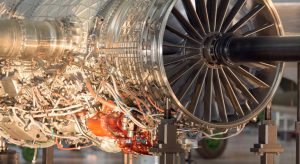
Making A Difference in Metal 3D Printing
We know that every manufacturing process, whether it is traditional casting or direct 3D metal printing, has its limitations. Traditional casting has challenges – the high tooling cost and long lead time. On the other hand, direct 3D metal printing is limited by material compatibility. Direct 3D metal printing has the ability to create parts quickly, speeding up prototyping and development cycles. But the choice of materials is limited. If the preferred material is not available, engineers must design parts in alternative materials and therefore cannot use these parts for the final production process. Development time now increases. Likewise, the long process of getting new materials approved negates the main advantage of obtaining parts quickly.
The challenge has been met by Enable Manufacturing, a UK-based metal 3D printing service provider. It has announced that it is now able to produce metal parts with its additive casting process in more than 130 metals. Its casting process uses a combination of 3D printed molds and traditional casting means to create metal parts. Enable aims to offer an expansive material selection for customers, so that they are able to produce their metal parts in the desired material.
What then are the benefits of the combination? As mentioned, it removes the limitation and high cost of tooling as molds are made by means of additive manufacturing. It expands the metal options for engineers, providing a service for different types of metal parts for a variety of applications using the additive casting process. Complex metal parts of any size can be manufactured cost effectively.
To demonstrate, Enable can produce parts using AISI 420 stainless steel, which is a higher fatigue strength alternative to AISI 316L stainless steel. Although parts can be 3D printed with AISI 316L, some applications in aerospace and heavy industry require a higher fatigue strength offered by the likes of AISI 420, however, the latter is not available for 3D printing, but can be used in casting processes.
3D printing in mold making for casting manufacturing processes has been employed by a number of companies. TRUMPF, a German machine tool manufacturer, has highlighted the value of 3D printing in complex mold making. 3D Systems, Voxeljet, and Soliscape have also released 3D printers specifically for casting and molding applications.



